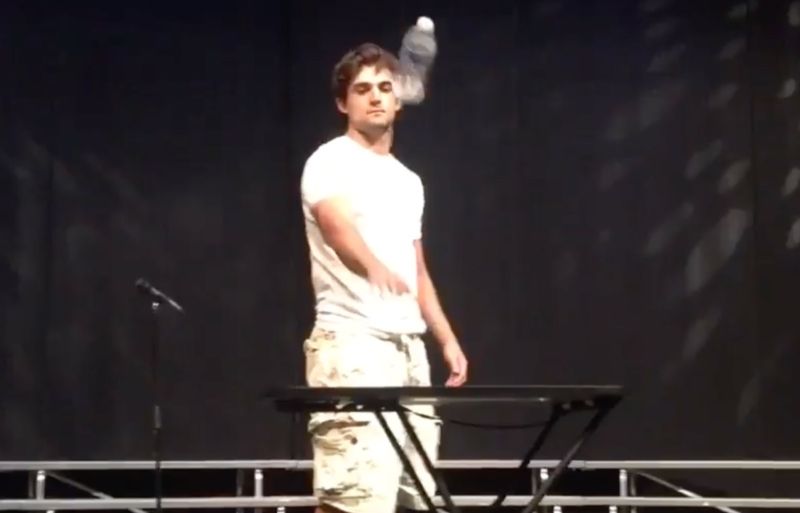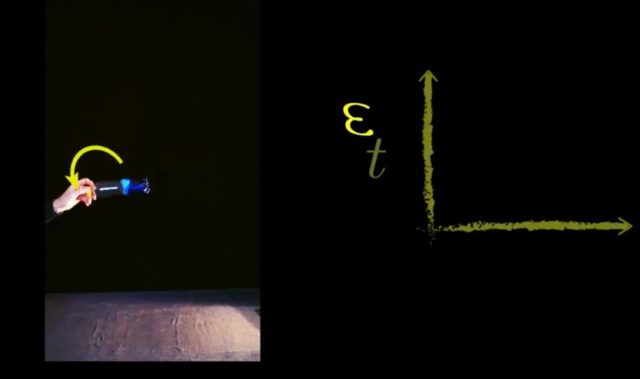Physics holds the key to performing the flipping water bottle trick

Enlarge / High school student Michael Senatore started the water bottle flipping craze with his May 2016 performance in a talent show. (credit: YouTube)
The water bottle flipping craze, in which a partially filled bottle of water is flipped and magically lands upright, swept the globe a couple of years ago. Now a group of Dutch scientists has designed a classroom demo version of the feat, described in a recent paper in the American Journal of Physics. It is designed to illustrate the principle of conservation of angular momentum and includes handy tips on how to optimize your chances of successfully performing the trick.
The whole craze started back in May 2016, when a high school senior named Michael Senatore swaggered onto a stage and successfully flipped and landed a water bottle on a table during his school's annual talent show. The crowd went wild, and someone in the audience captured the feat with a smartphone camera. The resulting 30-second YouTube clip has garnered more than 8 million views and sparked a wave of copycat attempts around the world. The Backyard Scientist performed a version using a mercury-filled cylindrical container.

Experimentally verifying the trajectory of a flipping water bottle. (credit: P.J. Dekker et al.)
Explanations for the underlying physics quickly made the rounds as well, based on slow-motion playbacks of the motion of both the bottle and the liquid inside. The consensus: the motion of the bottle through the air causes the liquid to climb up the sides, thereby redistributing the mass and increasing the bottle's moment of inertia. That has a damping effect on the rotation, slowing it down just enough in time to stick the landing.
Read 6 remaining paragraphs | Comments